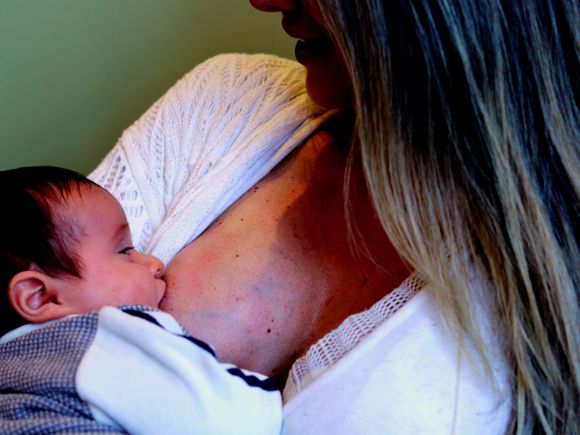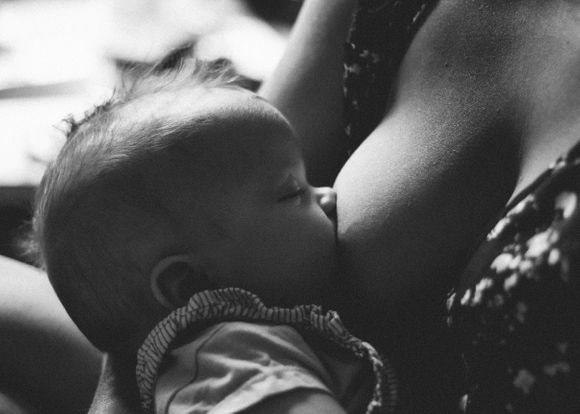Author: Rositsa Tashkova, Master of Molecular biology and Microbiology
For better or worse, in Europe, the number of children born by caesarean section (c-section) is very high. This makes the issue of breastfeeding after a c-section particularly relevant since reportedly in many cases, breast milk is not let down as easy as in natural birth. In this article, we will try to give a few useful tips on the topic of breastfeeding after a c-section, and some of them are common, regardless of the way of birth.
What conditions do hospitals offer
It is important to study what the conditions are, what exactly are the practices of the hospital in which we have chosen to give birth. For example, when do they give us the baby, do they encourage feeding with formula before they bring it to the mother- this should be exclusively the mother's decision- how long will the baby stay with us during the stay there, and whether to bring our own breast pump.
In some hospitals, the mother is allowed to be with her newborn at all times, with a small, mobile bed attached to her bed. This is very important so that we can make frequent attempts at breastfeeding until they are crowned with success.
Skin-to-skin contact between mother and baby is particularly important

Skin-to-skin contact with the newborn is of great importance. [ref. 1], from the very beginning of her life. It is recommended that immediately after being taken out of the mother's belly and the cut of the umbilical cord, the baby be placed on the chest of her mother and that there are no clothes or other fabrics between their bodies.
It should be considered that in babies born by c-section, fluid [ref. 2] may remain in the lung, leading to difficulties in the breathing of the newborn and require urgent manipulations that do not allow it to be left to the mother.
When will breast milk flow after c-section
Like any other new skill, breastfeeding requires effort and perseverance at the outset, whether we have given birth naturally or through a c-section. It can happen easily and naturally, but most often it is necessary to have patience and not give up, despite the difficulties and inconveniences.
In order to build in ourselves proper motivation and confidence [ref. 3] for a successful start in breastfeeding, it is necessary to get acquainted with the topic in advance.
But when will breast milk come after we have given birth by caesarean section?
Breast milk usually comes on the second or third day, but it is normal for this to happen even on the sixth. Even if it is late, this is not a cause for concern, as long as we make the necessary efforts and do not give up prematurely.
How often to breastfeed the newborn baby at the very beginning

If the baby needs to be separated from us at the beginning, once we feel ready to breastfeed, we may try to pump breasrmilk using a breast pump. It is good to ask a midwife or lactation consultant for assistance if the hospital offers one.
If we already have the baby, it is good to breastfeed every two hours [ref. 5] - the ultimate goal is 10-12 times a day.
It should be considered that during breastfeeding hormones are released that cause cuts of the uterus, which can be painful after a c-section. In this case, it is good to ask the doctor what painkillers it is appropriate to take if the pain is too strong. These contractions are part of the recovery process and help the uterus shrink to its original size.
How to tell if the baby is hungry
The newborn gives signals that she needs food before she even cries. Crying is a sign that she's already very hungry.
Before that, the newborn becomes restless, can begin to suck fingers, open a mouth and look for his mother's breast.
If the newborn has had to be bottle-fed before learning to suck, then breastfeeding is difficult [ref. 6].
How to help the baby start sucking

The baby is born with a suction reflex. Thanks to the mother's breasts, humanity has survived for so long - however difficult it may seem at the beginning [ref. 7], it is not impossible.
To begin breastfeeding, it is important to be comfortable. Read further to learn about the appropriate post-c-section breastfeeding poses. It is necessary to bring the baby closer to our breast, providing support for her back.
Then we can touch with the nipple of our breast the baby's upper lip to give it a hint. While sucking properly, not only the nipple falls into the baby's mouth, but also most of the areola around it (this is the darker, often pigmented part around the nipples).
During breastfeeding, it is necessary to stick both the body and the head of the baby, as well as the breast itself. The baby should drink up the milk from one breast before starting the second, and it is possible to even fall asleep in the meantime.
Comfortable post-c-section breastfeeding poses
Caesarean section is a surgical operation, and recovery takes time; pain is a factor that is not to be ignored. This fact can make it difficult to find a suitable position for breastfeeding.
It should be taken into account that the baby kicks, and we have a wound low on the abdomen, which we need to protect. The classic breastfeeding posture [ref. 8], in which the mother sits and has wrapped her baby with both hands after a c-section can be painful and even impossible.
Instead, it is a good idea to lie on one side, and have pillows under the head, behind the back and between our hips for support. The baby is placed lying alongside, facing us, as the nipple should be at the level of her mouth. In this and all other breastfeeding poses, it is very important to monitor whether the baby can breathe freely, that is, whether something clogs her nose.
Another suitable position is to place the baby's body alongside ours, but laterally, under the arm on whose side we will breastfeed. For example, if we are breastfeeding from the right breast, with the left hand we need to hold the breast, and with the right arm to maintain the back and head, and we do not have to bend the baby's head forward or backward to suck. We support the head by putting our palm at the top of the back, the thumb behind one ear, and the index finger and the other fingers - behind the other ear.
Antibiotics, anesthesia, and painkillers
The need to apply the anesthetic, and then also painkillers or antibiotics, can worry the mother in terms of safety for the baby - whether they will harm her through breast milk.
Actually, the medications used are safe, some of them can cause drowsiness in both mother and baby as a side effect. If we have any concerns, we can always consult the doctor or midwife, even before the birth itself.
Support and understanding

For the good physical and emotional health of the mother, it is of the utmost importance that she is supported [ref. 9] in every way by her partner, her family, and friends.
After a c-section, the mother should not be busy with chores, should not lift any heavy objects, if possible to get enough sleep and rest, and receive caring attention. With proper consideration of the new situation, soon everything will be arranged.
No matter how difficult all this seems - childbirth, surgery, breastfeeding, waking up, and emotions of any nature, the ultimate goal - creating a life - is worth it!

